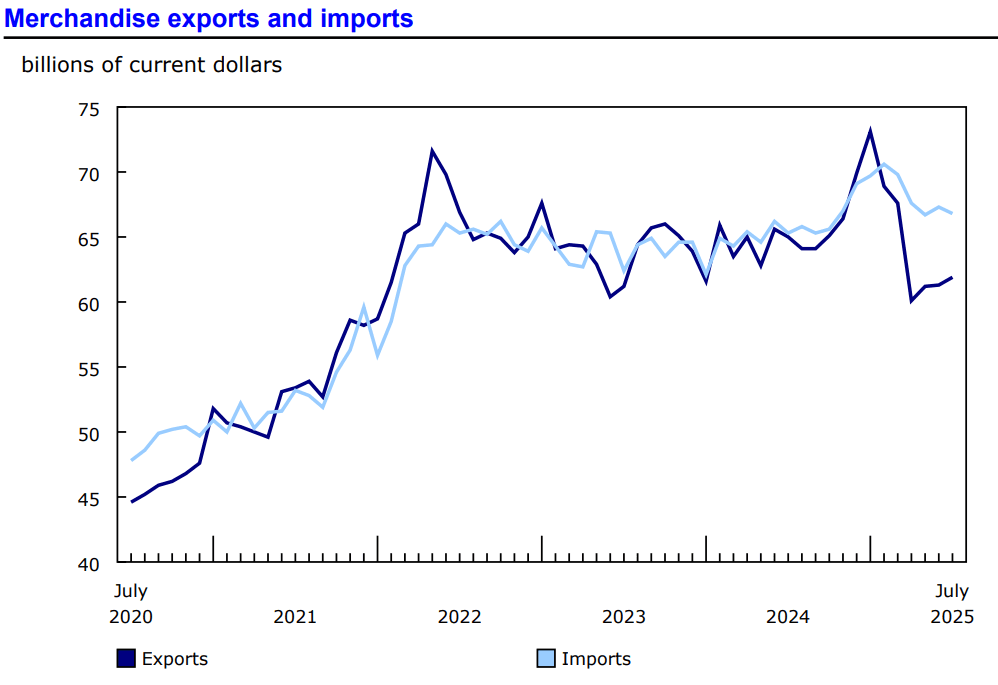MNI: Canada July Trade Deficit Narrows But YTD Is A Record
Canada's trade balance narrowed less than expected in July even with some one-off positive factors, while the drag from the U.S. tariff war kept pushing the year-to-date shortfall to a record high.
The merchandise trade deficit of CAD4.9 billion shrank from June's CAD6 billion and is still one of the widest on record in Statistics Canada's report Thursday from Ottawa. Economists predicted a CAD4.5 billion deficit.
Exports rose 0.9% in July for the third straight increase, led by a 6.6% rise in autos that the agency said was linked to a favorable seasonal adjustment factor. Summer shutdowns were less of a drag this year after production plunged earlier as U.S. tariffs took hold. Energy exports also for the first time in six months following a period of weak prices, another sign it will be difficult to sustain July's momentum in shipments abroad.
The 0.7% decline for imports also overstates the strength of Canada's trade, coming after the arrival of a major piece of Newfoundland offshore oil equipment and excluding that broader equipment category total imports rose 2.2% in July.
Canada's year-to-date trade deficit is a record CAD24.5 billion, greater even than the pandemic year of 2020, when borders and major industries were shut and the deficit came in at CAD23.6 billion. The hit to trade from the U.S. dispute is one reason the Bank of Canada has said it may cut interest rates again to follow up on a string of seven earlier reductions, with officials saying they can act if the economy stumbles and inflation remains contained.
Canada had sent about three-quarters of its exports to the United States before the trade war, and the bilateral surplus for January to July has shrunk to CAD48.7 billion from CAD60.1 billion in the same period last year. Those figures are still well short of Donald Trump's claims that the U.S. has deficit with Canada of USD200 billion each year. Trump also has said tariffs on Canada are justified by illicit flows of migrants and drugs, though official figures from both countries show Canada makes up perhaps less than 1% of those flows.
The U.S. has also put steep tariffs on steel and aluminum. Aluminum exports have plunged this year from a peak of almost CAD1.1 billion to about CAD400 million.
There is still some upside in Canada's performance this year. Total exports from January to July have climbed 1% compared with the same period last year. The July drop of 31% brought the total value to the lowest since 2019.
